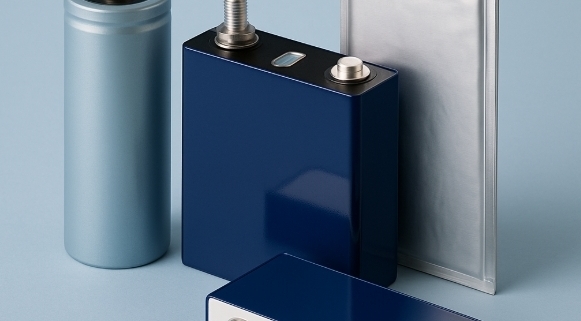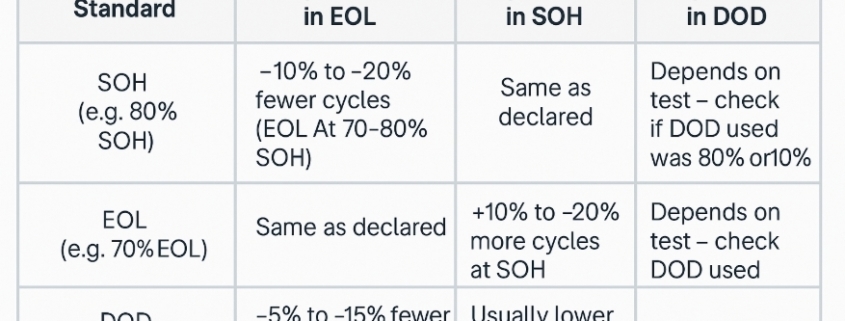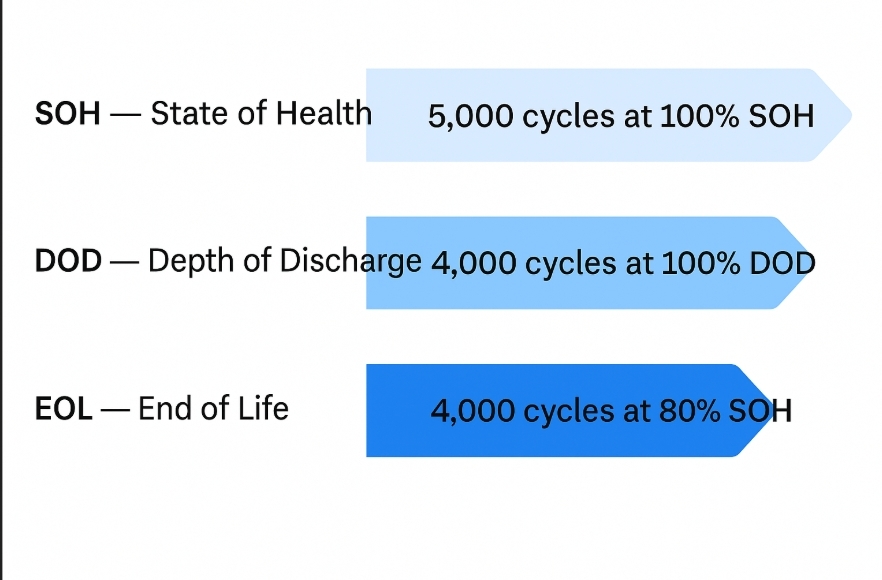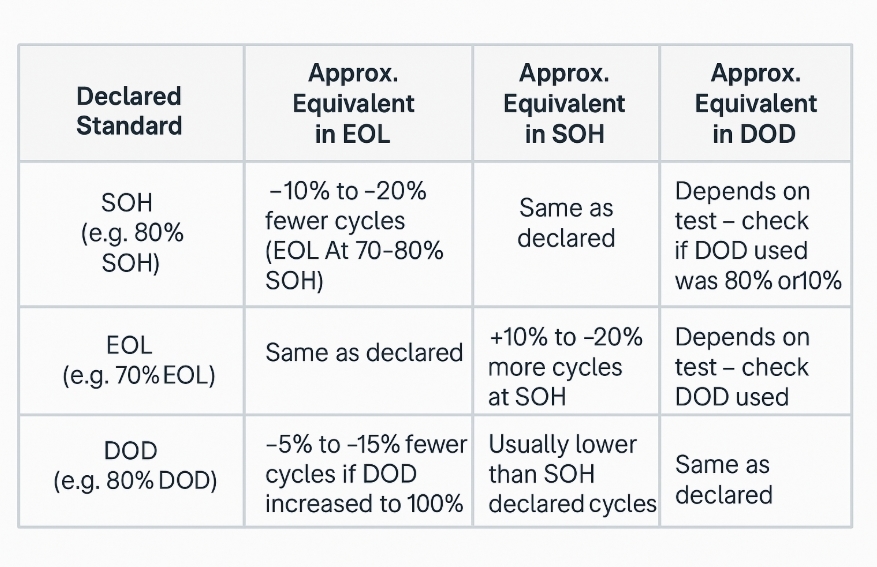Demystifying LiFePO4 Battery Testing: How Manufacturers Grade Their Cells
LiFePO4 battery testing: LiFePO4 batteries have become the backbone of energy storage systems, from solar power banks to electric vehicles. But did you know that behind every “Grade A” label is an extensive, complex process of testing, sorting, and grading? This blog post takes you inside the factory to reveal how manufacturers test LiFePO4 cells, what parameters matter most, and why standardized grading remains a challenge.
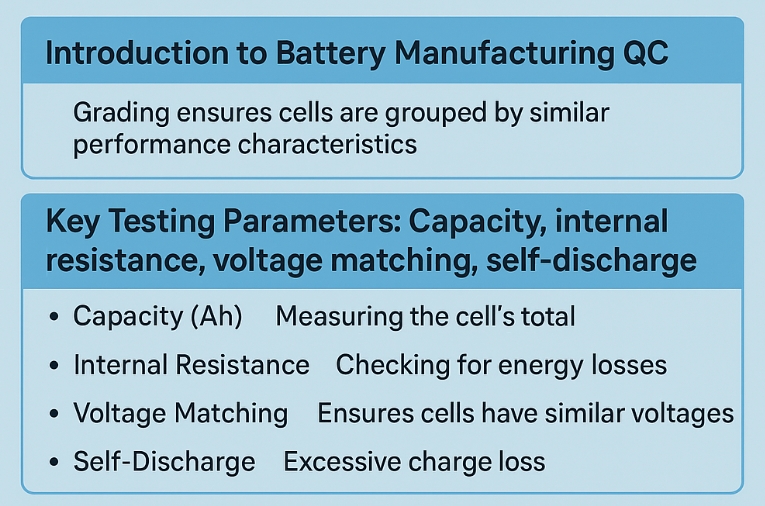
Introduction to Battery Manufacturing QC for LiFePO4 Battery Testing
In any reputable LiFePO4 cell factory, Quality Control (QC) is the beating heart of the operation. The manufacturing process includes multiple checkpoints — from raw material inspection to final cell testing. Even the best production lines produce cells with slight variations. These variations affect performance, safety, and lifespan, which is why proper grading is essential.
Grading helps ensure that cells with similar performance characteristics are grouped together. This is vital for applications like energy storage systems (ESS), where mismatched cells can cause premature failure or reduced efficiency.
LiFePO4 Battery Testing Parameters: What Gets Checked?
Let’s break down the most critical parameters manufacturers measure when grading LiFePO4 cells.
1. Capacity (Ah)
Capacity is the total amount of charge a cell can store, typically measured in ampere-hours (Ah). Manufacturers run charge-discharge cycles to verify that the cell meets or exceeds its rated capacity — usually within ±2% for Grade A cells. Cells that fall slightly below the spec can get downgraded to Grade B or C.
2. Internal Resistance (IR)
Internal resistance affects how well a battery can deliver current. High IR means greater energy losses and more heat during use. Cells with lower IR are preferred for applications requiring high power output. Manufacturers test IR at different temperatures to ensure stability.
3. Voltage Matching
Cells are sorted based on their open-circuit voltage (OCV) to ensure that packs built from multiple cells stay balanced. Cells with mismatched voltages can lead to uneven charge/discharge cycles and reduce overall pack life.
4. Self-Discharge Rate
A cell’s self-discharge rate determines how quickly it loses charge when not in use. Excessive self-discharge indicates internal defects or impurities, which can compromise performance and safety.
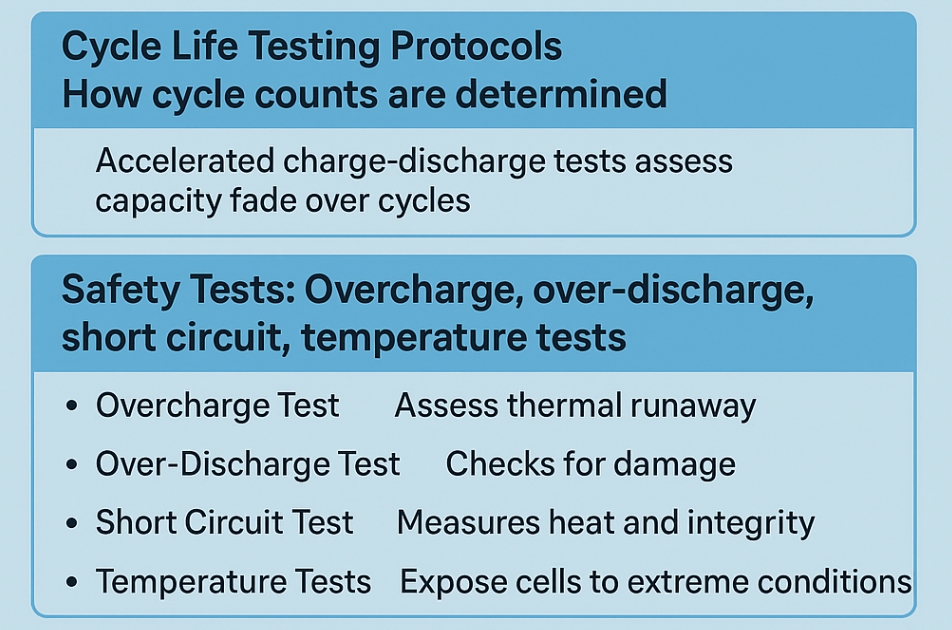
Cycle Life Testing Protocols: How Long Will It Last?
One of the biggest selling points of LiFePO4 is its long cycle life — often 2,000–6,000 cycles. But how is this tested?
Manufacturers perform accelerated cycle life tests. Cells are charged and discharged repeatedly at defined C-rates (charge/discharge rates) and ambient temperatures. They measure capacity fade over time. A high-quality Grade A cell should retain at least 80% of its original capacity after the specified number of cycles.
Due to time constraints, manufacturers often rely on statistical sampling and predictive modeling rather than testing every cell for thousands of cycles.
Safety Tests: Beyond Performance
LiFePO4 is one of the safest lithium-ion chemistries, but that doesn’t mean safety tests are skipped.
Common safety tests include:
- Overcharge Test: The cell is charged beyond its maximum voltage to check for thermal runaway or swelling.
- Over-Discharge Test: The cell is deeply discharged to see if it can recover without damage.
- Short Circuit Test: The terminals are shorted under controlled conditions to check heat generation and structural integrity.
- Temperature Tests: Cells are exposed to extreme hot and cold to ensure stable performance across operating ranges.
Cells that fail safety tests are immediately rejected or downgraded for less demanding applications.
The “Defect Rate” and How Grade B/C Cells Are Created
No production line is perfect. Even leading manufacturers have a defect rate — usually 3–5% — where cells fall outside the ideal performance window.
Grade B cells: Slightly lower capacity or higher IR than Grade A, but still usable for less critical applications like budget power banks or backup systems.
Grade C cells: Significant deviations or borderline defects. Often sold at a deep discount for non-critical uses or recycling. These should never be used in high-demand or mission-critical projects.
Some unscrupulous sellers remarket Grade B or C cells as Grade A, so it’s crucial to buy from trusted suppliers with traceable testing data.
LiFePO4 Battery Testing: Why Standardized Grading is a Challenge
One frustrating reality in the LiFePO4 market is the lack of a global standard for grading. Different factories may use slightly different thresholds for what they call Grade A, B, or C.
Factors like:
- Local production tolerances
- Variations in test equipment
- Sampling size
- Batch-specific conditions
…all mean that “Grade A” from one supplier might be closer to “Grade B” by another’s standards.
For buyers, this makes third-party testing and working with reputable suppliers essential. A cell’s data sheet should always come with original test reports showing capacity, IR, and other key parameters.
Final Thoughts: Stay Informed, Source Smart
Demystifying LiFePO4 cell grading is about understanding the science behind your battery pack. When you know what goes into the tests — capacity, IR, voltage, cycle life, and safety — you can better evaluate what you’re buying.
✅ Always ask for factory test reports.
✅ Buy from suppliers who are transparent about their QC processes.
✅ Match your project’s needs with the right cell grade.
A few extra dollars spent on verified Grade A cells can save you massive headaches, costly replacements, or even safety risks down the line.
LiFePO4 Battery Testing FAQs
Q: How do I know if a LiFePO4 cell is really Grade A?
A: Always request factory test reports showing capacity, internal resistance, voltage, and cycle life data.
Q: Are Grade B cells safe to use?
A: They can be safe for low-demand applications but avoid using them in critical systems like off-grid solar storage or EVs.
Q: Why do some sellers mislabel cells?
A: To maximize profit. Unscrupulous sellers can mix Grade B/C cells into Grade A batches to cut costs.


